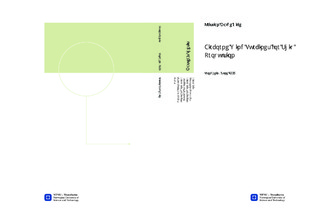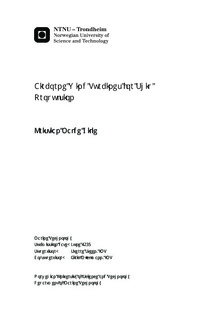| dc.contributor.advisor | Steen, Sverre | nb_NO |
| dc.contributor.advisor | Bøckmann, Eirik | nb_NO |
| dc.contributor.author | Gilje, Kristian Malde | nb_NO |
| dc.date.accessioned | 2014-12-19T12:09:21Z | |
| dc.date.available | 2014-12-19T12:09:21Z | |
| dc.date.created | 2013-09-09 | nb_NO |
| dc.date.issued | 2013 | nb_NO |
| dc.identifier | 646800 | nb_NO |
| dc.identifier | ntnudaim:9557 | nb_NO |
| dc.identifier.uri | http://hdl.handle.net/11250/238478 | |
| dc.description.abstract | As the focus on the environment and how to produce ?clean? and renewable energy takes a lot of focus these days, the research on this field is constantly increasing. Especially in the shipping industry there are frequently new rules and limitations being set into force. To keep up with these restrictions one needs to think outside the box and develop new ways to make it possible to keep the fuel consumption down, thus becoming more environmentally friendly. AWTs (Airborne Wind Turbines) could be one of the options. An AWT operates on the same aerodynamic principles as a conventional wind turbine. It is connected with a tether to the ground, utilizing stronger wind high above ground, inducing large enough lift forces on the wing to keep it flying. The wing will then go into a crosswind motion and it will be able to achieve a fairly high incoming velocity. By mounting turbines on the wing, it will then be possible to produce power. The power equation is proportional to the incoming wind speed cubed, and due to the high incoming velocity the potential power output of the AWT is therefore very high.In this master thesis it will be explored if it could be possible to mount an AWT on a ship to assist the propulsion. Also the forces on the wing have been calculated in order to check how large wind speed is needed in order for the wing to stay aloft.A big concern to this idea is the forces in the tether. The idea will be considered feasible if the thrust to the propeller given by the produced power of the wing is higher than the resistance on the ship due to the horizontal forces in the tether.The calculations show that a minimum wind speed of 4.5 [m/s] is needed for the wing to stay aloft. The propulsion given to the propeller from the power production of the wing is for all ship speeds too low to consider the idea feasible. | nb_NO |
| dc.language | eng | nb_NO |
| dc.publisher | Institutt for marin teknikk | nb_NO |
| dc.title | Airborne Wind Turbines for Ship Propulsion | nb_NO |
| dc.type | Master thesis | nb_NO |
| dc.source.pagenumber | 90 | nb_NO |
| dc.contributor.department | Norges teknisk-naturvitenskapelige universitet, Fakultet for ingeniørvitenskap og teknologi, Institutt for marin teknikk | nb_NO |

